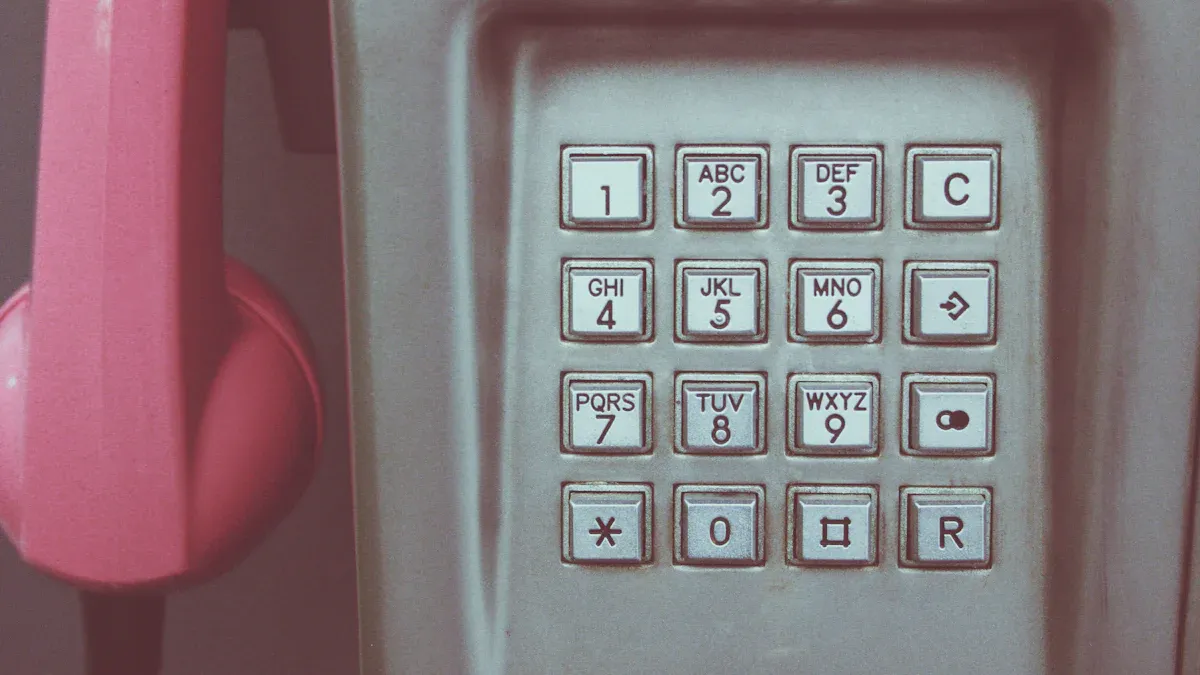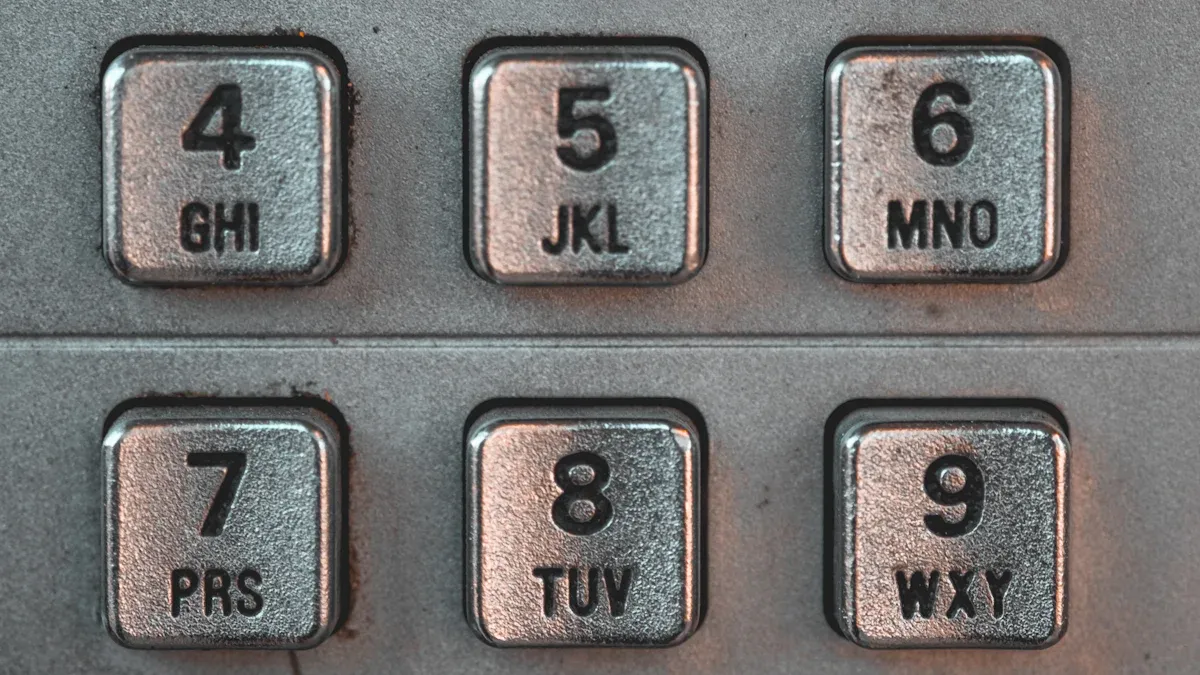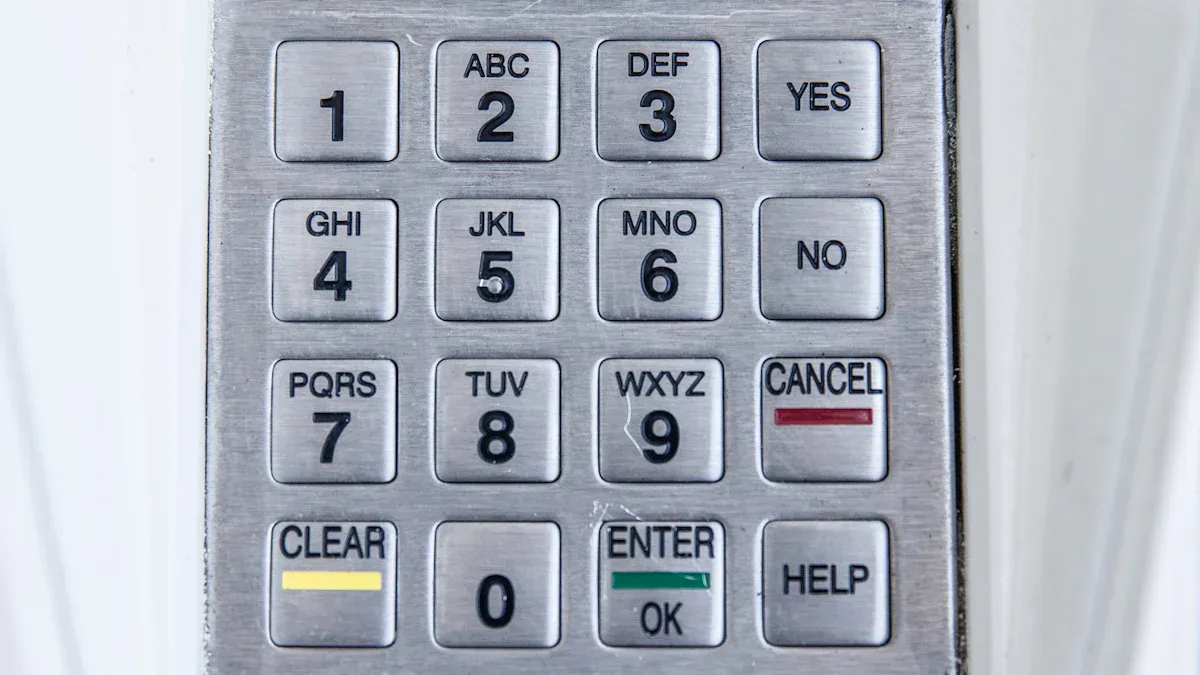
Taking care of your stainless steel keypad isn’t just about keeping it shiny. It’s about making sure it works perfectly for years. Dirt, grime, and even moisture can cause trouble if ignored. A quick wipe with the right cleaner and keeping it away from harsh environments can make all the difference. Whether you’re using a metal dustproof stainless steel industrial keypad or a metal waterproof industrial keypad, a little care goes a long way.
المداخل الرئيسية
- Clean your stainless steel keypad often with mild soap and water.
- Do not use strong chemicals or rough tools to avoid harm. Use soft cloths and brushes instead.
- Check your keypad often for damage and fix problems quickly to make it last longer.
Cleaning and Maintenance for Stainless Steel Keypads

Keeping your stainless steel keypad clean is one of the easiest ways to ensure it lasts for years. Regular maintenance not only keeps it looking great but also prevents dirt and grime from affecting its functionality. Let’s dive into the best cleaning practices to keep your keypad in top shape.
Best Cleaning Materials and Tools for Stainless Steel Keypads
When it comes to cleaning your stainless steel keypad, using the right materials is key. The wrong tools can scratch or damage the surface, so it’s important to choose wisely. Here’s what you’ll need:
- Microfiber cloths: These are soft and won’t leave scratches. They’re perfect for wiping away dust and fingerprints.
- Mild dish soap: A gentle soap mixed with water can remove most dirt without harming the keypad.
- Distilled water: Tap water can leave mineral deposits, so distilled water is a better choice.
- Isopropyl alcohol (70%): This works well for disinfecting and removing stubborn grime.
- Soft-bristled brush: Use this for cleaning around buttons or in tight spaces.
Tip: Avoid abrasive cleaners, steel wool, or anything that could scratch the surface. These can ruin the keypad’s finish and reduce its lifespan.
Step-by-Step Guide to Cleaning Stainless Steel Keypads
Cleaning your stainless steel keypad doesn’t have to be complicated. Follow these simple steps to get the job done:
- Turn off the device: Before you start, make sure the keypad is powered down to avoid accidental inputs.
- Dust the surface: Use a dry microfiber cloth to remove loose dust and debris.
- Prepare a cleaning solution: Mix a few drops of mild dish soap with distilled water in a small bowl.
- Wipe the keypad: Dip a microfiber cloth into the solution, wring it out, and gently wipe the keypad. Focus on areas with visible dirt or smudges.
- Clean around buttons: Use a soft-bristled brush to reach tight spaces or crevices.
- Rinse with distilled water: Dampen another cloth with distilled water and wipe away any soap residue.
- Dry thoroughly: Use a dry microfiber cloth to remove any remaining moisture.
Note: If you’re disinfecting, apply a small amount of isopropyl alcohol to a cloth and gently wipe the surface. Avoid pouring liquids directly onto the keypad.
Mistakes to Avoid When Cleaning Stainless Steel Keypads
Even with the best intentions, it’s easy to make mistakes when cleaning your stainless steel keypad. Here are some common pitfalls to avoid:
- Using harsh chemicals: Bleach, ammonia, and other strong cleaners can damage the keypad’s surface. Stick to mild solutions.
- Skipping the drying step: Leaving moisture on the keypad can lead to water spots or even corrosion over time. Always dry it thoroughly.
- Applying too much pressure: Scrubbing too hard can scratch the surface or damage the buttons. Be gentle.
- Ignoring regular cleaning: Dirt and grime can build up over time, making it harder to clean later. A quick wipe every week can save you trouble.
By avoiding these mistakes, you’ll keep your stainless steel keypad looking and working like new.
Preventive Measures to Protect Stainless Steel Keypads
Shielding Stainless Steel Keypads from Environmental Damage
Your stainless steel keypad is tough, but it’s not invincible. Environmental factors like moisture, dust, and extreme temperatures can take a toll over time. Protecting it from these elements is key to keeping it in great shape. Here’s how you can shield your keypad from environmental damage:
- Keep it dry: Moisture is one of the biggest threats. If your keypad is in a humid area, consider using a dehumidifier or silica gel packets nearby.
- Avoid direct sunlight: Prolonged exposure to sunlight can cause discoloration or even damage the keypad’s surface. Place it in a shaded or indoor location whenever possible.
- Use protective covers: A simple cover can block dust, dirt, and spills. Look for covers designed specifically for stainless steel keypads for the best fit.
- Control the temperature: Extreme heat or cold can affect the keypad’s performance. Try to keep it in a stable environment with moderate temperatures.
Tip: If your keypad is used outdoors, invest in a weatherproof model. These are built to withstand harsh conditions and last longer.
Usage Tips to Prevent Wear and Tear on Stainless Steel Keypads
How you use your stainless steel keypad matters just as much as how you clean it. Everyday habits can either extend its life or cause unnecessary wear and tear. Follow these tips to keep your keypad functioning like new:
- Press gently: Avoid pressing the buttons too hard. A light touch is usually enough to register input and prevents unnecessary strain on the keypad.
- Avoid sharp objects: Never use pens, keys, or other sharp items to press the buttons. These can scratch the surface or damage the buttons.
- Clean hands before use: Dirt, grease, and oils from your hands can build up over time. Wash your hands or wipe them clean before using the keypad.
- Limit exposure to chemicals: If you’re working in an environment with chemicals, make sure they don’t come into contact with the keypad. Chemicals can corrode the surface or seep into the buttons.
- Inspect regularly: Check for signs of wear, like loose buttons or fading labels. Catching these issues early can prevent bigger problems later.
Note: Treat your stainless steel keypad with care, and it will reward you with years of reliable performance.
Inspecting and Repairing Stainless Steel Keypads

Spotting Early Signs of Damage on Stainless Steel Keypads
Catching damage early can save you from costly repairs or replacements. But how do you know when your stainless steel keypad needs attention? Start by looking for visible signs like scratches, dents, or discoloration. These might seem minor, but they can lead to bigger problems if ignored.
Next, check the buttons. Are any of them sticking or not responding as they should? This could mean dirt or debris has built up inside. Also, pay attention to fading labels or symbols on the keys. If they’re hard to read, it might be time to take action.
Finally, listen to your keypad. If you hear unusual sounds when pressing the buttons, it’s a sign something isn’t right. Regularly inspecting your keypad helps you catch these issues before they get worse.
DIY Repairs for Stainless Steel Keypads
You don’t always need a professional to fix minor issues. Some repairs are simple enough to handle on your own. For scratches, try using a stainless steel polish or a non-abrasive cleaner. Apply it with a soft cloth and rub gently in the direction of the grain.
If a button is stuck, clean around it with a soft-bristled brush. For deeper cleaning, you can use a small amount of isopropyl alcohol on a cotton swab. Be careful not to let liquid seep into the keypad.
For fading labels, consider using a label maker or stickers to replace worn-out symbols. These quick fixes can extend the life of your stainless steel keypad without breaking the bank.
Tip: If the damage seems too severe, it’s best to consult a professional to avoid making things worse.
Advanced Strategies for Extending the Life of Stainless Steel Keypads
Using Protective Coatings on Stainless Steel Keypads
If you want your stainless steel keypad to last even longer, protective coatings are a game-changer. These coatings act like a shield, keeping the surface safe from scratches, moisture, and even corrosion. You don’t need to be an expert to apply them either. Many products are available as sprays or wipes, making the process quick and easy.
Start by choosing a coating designed specifically for stainless steel. Look for options labeled as anti-corrosion or anti-fingerprint. Before applying, clean the keypad thoroughly to remove any dirt or grease. Once it’s clean and dry, follow the product instructions to apply the coating evenly.
Tip: Reapply the coating every few months, especially if the keypad is in a high-traffic or outdoor area. This small effort can make a big difference in its durability.
Knowing When to Upgrade or Replace Stainless Steel Keypads
Even with the best care, there comes a time when replacing your stainless steel keypad is the smarter choice. But how do you know when it’s time? Start by evaluating its performance. If the buttons are unresponsive or the surface is heavily worn, it might be time for an upgrade.
Consider the environment too. If your keypad is exposed to harsher conditions than it was designed for, switching to a more durable model could save you money in the long run. For example, if you’re using an indoor keypad outdoors, upgrading to a weatherproof version can prevent frequent repairs.
Note: Upgrading doesn’t just mean replacing a broken keypad. It can also mean choosing a model with better features, like enhanced durability or advanced functionality, to meet your evolving needs.
Taking care of your stainless steel keypad doesn’t have to be complicated. Regular cleaning keeps it looking sharp and working smoothly. Protecting it from damage ensures it lasts longer. Inspecting it often helps you catch problems early. These simple steps make a big difference. Start today and enjoy a keypad that stays reliable for years.
FAQ
How often should you clean your stainless steel keypad?
You should clean it weekly to remove dirt and grime. Regular cleaning prevents buildup and keeps your keypad looking great and working smoothly.
Can you use vinegar to clean stainless steel keypads?
No, vinegar can damage the surface. Stick to mild dish soap and distilled water for safe cleaning.
What’s the best way to protect a keypad used outdoors?
Use a weatherproof cover or upgrade to a weatherproof model. These options shield your keypad from harsh conditions like rain and sunlight.


